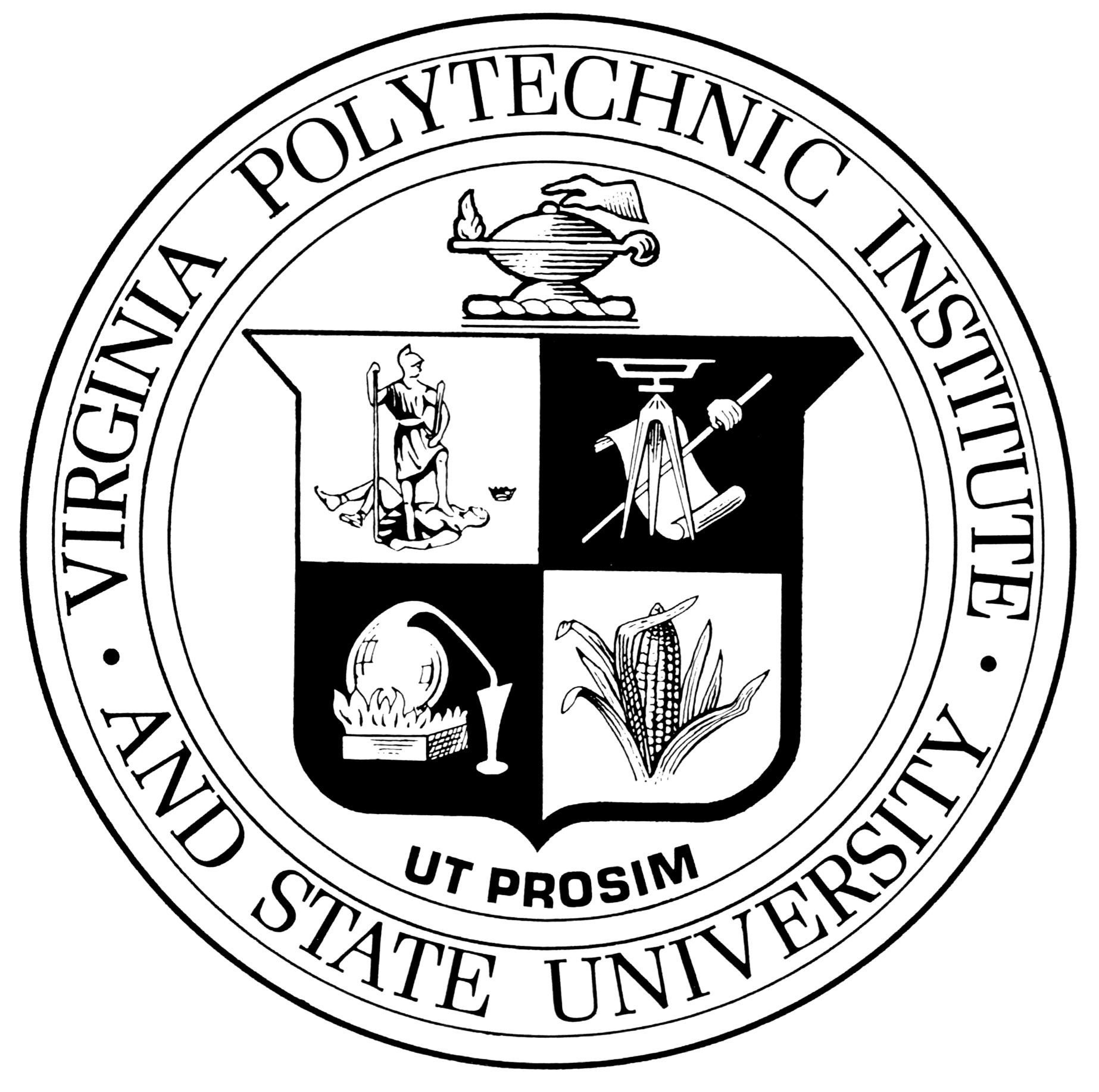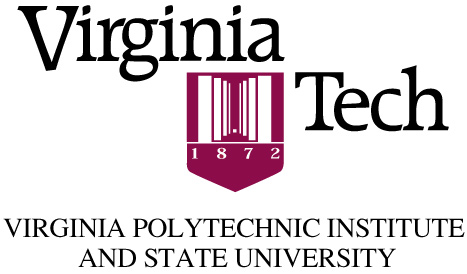Coat of Arms, Motto, and Seal
Many of the university’s traditions can be traced to the presidency of John M. McBryde and the changes he made in moving what was then called Virginia Agricultural and Mechanical College (VAMC) from a two-year-college-type school to a bona fide four-year college. McBryde’s changes in the little college spurred the Virginia General Assembly to make a change of its own in 1896 to reflect the “new” college. VAMC’s new name became Virginia Agricultural and Mechanical College and Polytechnic Institute, which the general populace shortened to Virginia Polytechnic Institute, or simply VPI.
With that new name in hand and aided by his son, John Jr., McBryde proceeded to develop a coat of arms, motto, and seal.
The motto Ut Prosim (translated from Latin to mean "That I May Serve") was also adopted in 1896. According to Duncan Lyle Kinnear in The First 100 Years history of Virginia Tech, "Unhappily, records concerning the circumstances surrounding the origin of the motto and the seal have not been located; but it is well known that McBryde and his son were adept in designing seals and suggesting mottos." The motto was literally "set in stone" when the Memorial Court of the War Memorial Chapel was dedicated on May 29, 1960. There are eight sculptured Indiana limestone pylons, with statues representing, from left to right: Brotherhood, Honor, Leadership, Sacrifice, Service, Loyalty, Duty, and Ut Prosim. The motto has always been a strong part of the university since it was adopted, but it has been fully embraced as a timeless ideal for our land-grant-school values of discovery, learning, and engagement following the events of April 16, 2007.

Coat of Arms and Seal: The coat of arms features a shield divided into four quarters. The first quarter portrays the figures from the obverse of the Seal of the Commonwealth of Virginia—representing our status as the state’s land-grant college. The second quarter is comprised of a transit theodolite (that’s an instrument that measures horizontal and vertical angles) and a leveling rod superimposed over a scroll—reflecting our engineering heritage. The third quarter shows a chemical retort (a glass vessel used for distilling) over a flame, with liquid dripping into a graduated beaker—expressing our additional academic scope. And the fourth quarter illustrates an upright half-shucked ear of corn—depicting our agricultural roots (so to speak). Above the shield sits the burning lamp of knowledge being filled by a human hand. At the bottom lie the Latin words Ut Prosim, which roughly translates to “That I May Serve.” Since the college would need a seal for official documents, the McBrydes encircled the coat of arms with a band that includes the name of the institution. In the late 19th century, the name used was the unofficial Virginia Polytechnic Institute. Today, we use our official name, Virginia Polytechnic Institute and State University. Per brand guidelines, the formal university seal is reserved for ceremonies, watermarks for official documents, diplomas, and building plaques.
Logos and Tagline
In 2016, it was determined that a new brand was needed for the university. A consultant was hired and that August the process started with the discovery phase. More than 100 interviews were conducted, representing students, faculty, staff, alumni, and community members. The process continued through 2017, culminating in the launch of the new brand and new logo in September.
As Virginia Tech reimagined its role as a global land-grant university, the visual representation of the university was also reimagined. The institutional and athletic identities were aligned to create a bold, simple, and recognizable logo that strengthens the overall brand.
Nearly a century after the McBrydes created the official seal, Larry Hincker, (now retired) associate vice president for University Relations, recognized the need for a less-formal visual element that Virginia Tech could use on signs, publications, and other items that do not require the official seal. So in the early 1990s, Hincker and graphic designer Michele Moldenhauer developed a logo, which consists of a shield that incorporates the Pylons of the War Memorial, underscored with the year of the university’s founding: 1872. The shape of the shield reflects the collegiate heritage of all universities. The university officially adopted the logo in May 1991 and updated it in 2006. It was retired in September 2017, with the adoption of a new brand and new logo.


The 2006 update followed a yearlong study by a branding consultant, who worked closely with the university community to develop a representative tagline for Virginia Tech. That tagline—Invent the Future—expresses the future-altering and future-enhancing work of each facet of the Virginia Tech experience. Although the logo can be used without the tagline, it is generally used with it.


The university also has an athletic logo: a streamlined VT, which is used only for sports and sports merchandise. Unveiled in 1984, the athletic logo is a composite of designs submitted by two Virginia Tech students—Lisa Eichler of Chesapeake, Va., and Chris Craft of Roanoke, Va.—to a competition sponsored by the university’s art department. The two students received $50. The logo replaced an older athletic logo that consisted of a large V with a T centered inside it, which had debuted in 1957.



